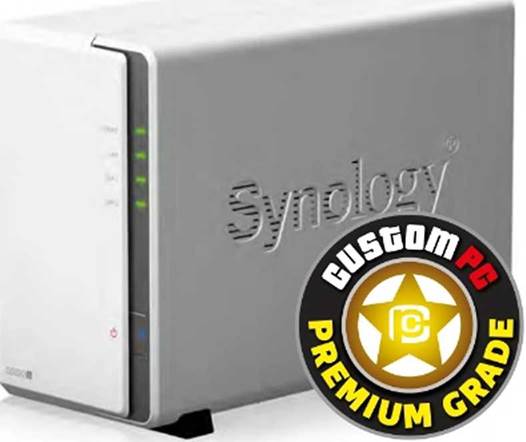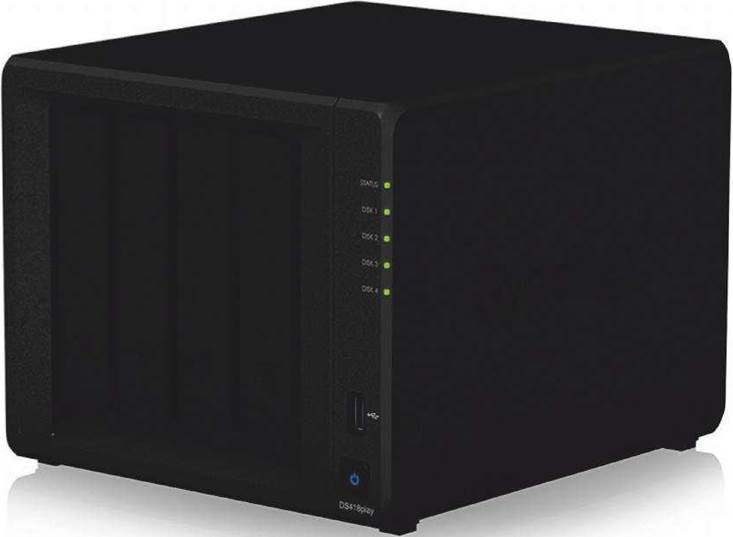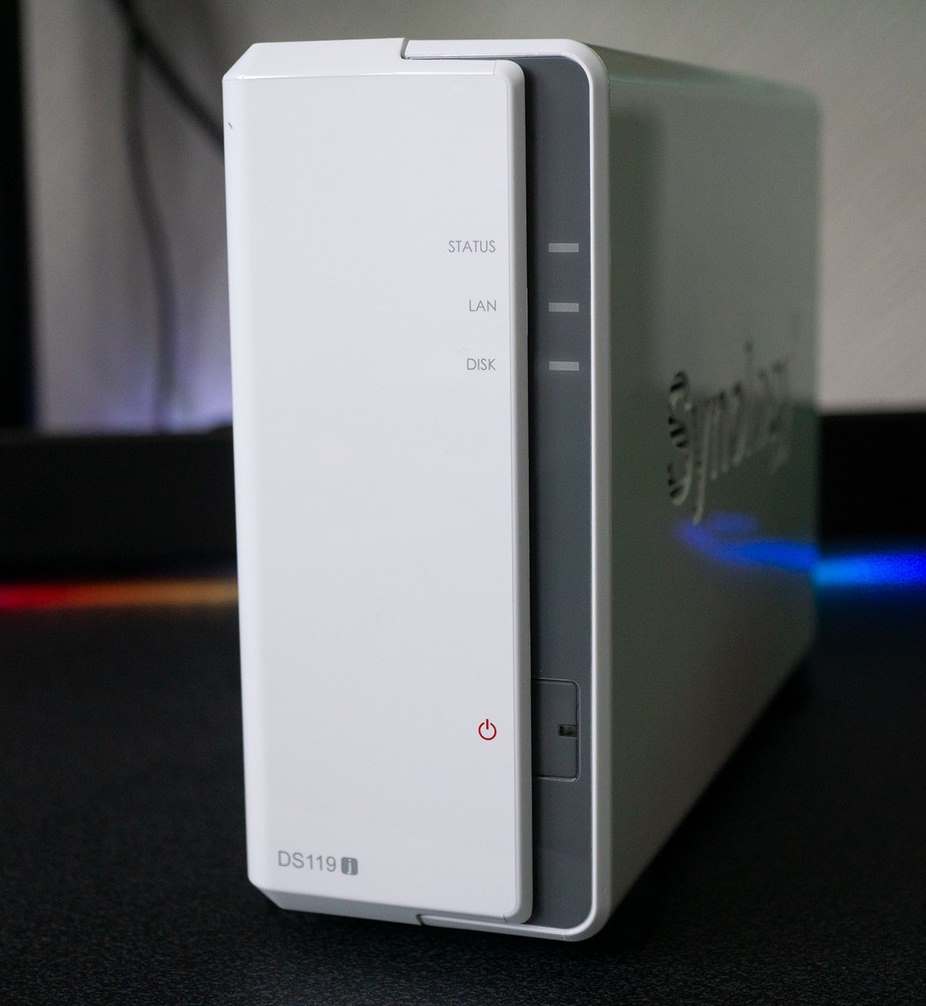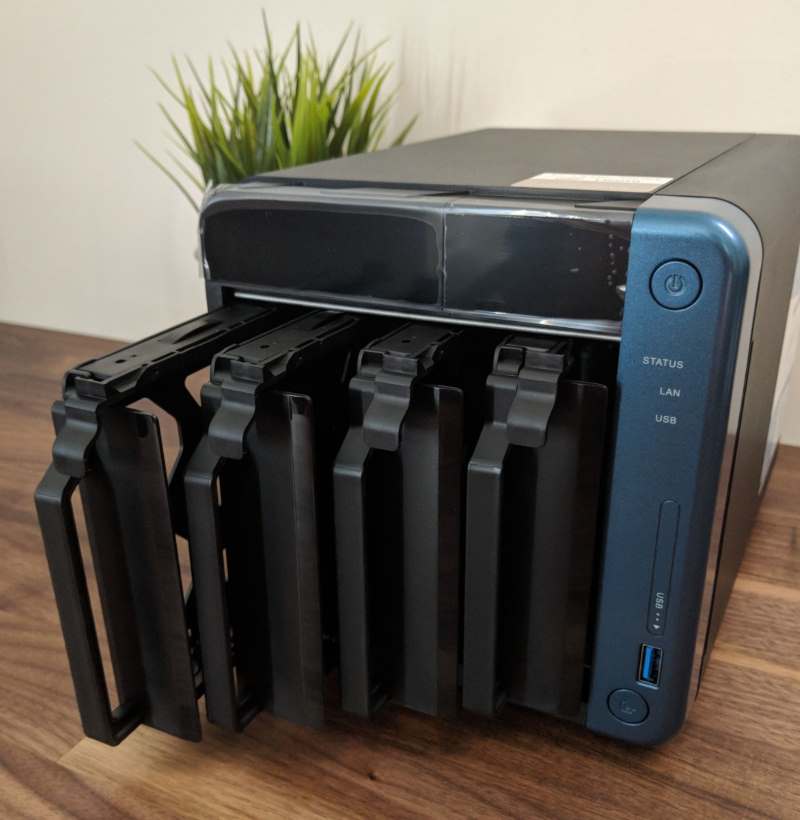DiskStation DS916+ Review
With Synology’s penchant for reusing its enclosures, it’s easy to assume that what’s inside remains unchanged.
From the outside, the new DiskStation DS916+ looks almost identical to the DS415+, but internally it has more in common with the company’s recent DS716+.For those confused by the naming conventions, the first number is the number of drives the system can accept, and then the last two numbers are year of launch, as in DS116 and DS216j.
However, the DS716+ and now the DS916+ take two and four drives, respectively. How does that work exactly? It’s correct, because both these units can bridge through an eSATA port to a second box, the DX513 or DX213, allowing more drives to be added.
Because the DS916+ has four bays and you can use the DX513 with five bays with it, the total drive capacity of this system is nine drives. And with the largest 8GB NAS drives, there’s a potential capacity of 72TB or, more realistically, 56TB with redundant RAID and a drive allocated for hot spare duties.
That’s a huge amount of space, so I’d contest that this hardware is really designed for small businesses and not home users – or anyone who doesn’t recoil at the price of the DS916+, another £330 for the DX513 and £2,600 in 8TB NAS hard drives.
With that much space on tap organised in performance RAID, the challenge is how that combined drive performance can be delivered to those connected to it over Ethernet.
Synology’s solution is to give the DS916+ two gigabit Ethernet ports and allow them to be channel bonded to a suitable switch, effectively doubling the available bandwidth for reading and writing across the network. While most users won’t be similarly connected, at least two of them can connect simultaneously without impairing the other’s highest possible speed.
The quoted performance level of the system is 225.83MB/s reading and 209.35MB/s in a RAID 5 layout, and nothing I’ve seen contradicts those levels.
In an office of 15 or so people it’s unlikely that five or more would ever be simultaneously reading or writing to the DiskStation, and even then they’d get at least 50MB/s to themselves. For those with more than ten active users, there is an option to have 8GB of RAM, rather than the default 2GB, which would help smooth out the network-to-disk pathways and also allow more memory space for needy applications.
That brings us neatly to the other forte of the DS916+: service applications, specifically those relating to video processing.
Using the Intel Pentium N3710 quad-core 1.6GHz, (2.56GHz burst), this is one of the most powerful NAS boxes that Synology has built yet, and with its associated transcoding engine, it can process either a single 4K 30fps stream in real time or three 1080p H.264 (AVC), MPEG-2 and VC-1 streams at the same time.
Plex is one of the 77 or so apps you can install, and for anyone with a serious media distribution habit, the DS916+ is fully loaded for managing your collection of video, audio and still images.
It’s also one of the first NAS boxes that I’ve seen that supports Docker, delivering some potential for those building software containers and using virtualisation, as a development or test environment. It works with VMware, Citrix and Hyper-V, and it’s tailored to optimal performance while being operated in parallel environments.
In almost every respect, these features elevate the DS916+ to a whole new level of usefulness and flexibility that most NAS box users only dream of.
But there is one feature in here that seals the deal for this reviewer, and it’s called Btrfs. Some of you will be Linux users, and to them the Ntfs file system rather than Ext3 and Ext4 is akin to the revolution that took place in the
Windows world when it moved from using FAT16/32 to NTFS. It introduces cool new facilities like self-healing, snapshotting up to 1,024 levels deep, and file and folder level restorations.
Obviously, operating a file system with these sorts of enhancements has an overhead on resources, but the DS916+ is adequately provisioned as to nullify that impact.
As I worked my way through this subtly complex solution, I kept wondering what its weakness was, but there really isn’t anything obviously wrong with this design.
It delivers on so many levels for a very wide range of applications, and all without compromising its approachability to those administering it without a BSC in computer science.
I’d love the DS916+ even more if it was a bit cheaper and we could all afford NAS boxes this well engineered, but for the moment this is exclusively for the small business domain. Mark Pickavance
DiskStation DS916+ Review – Verdict
Powerful and expandable NAS for professional use.
Was this article helpful?
YesNo





